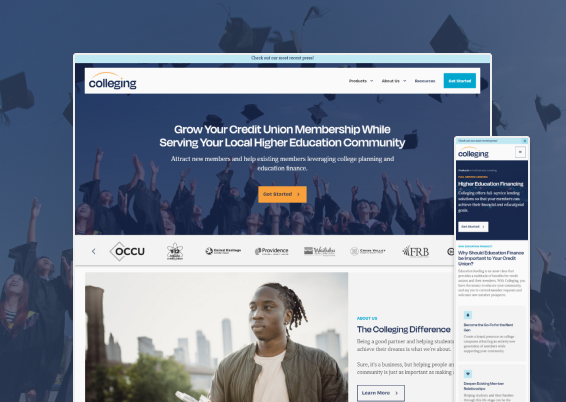What Makes a Modern Website Design Stand Out from the Competition
Vital Tips for Crafting High-Impact Site Layouts
In the realm of electronic advertising, the style of an internet site offers as an important touchpoint for involving potential customers. To develop high-impact site layouts, one need to consider necessary components such as audience understanding, user experience, and aesthetic pecking order.
Understand Your Audience

To effectively comprehend your target market, begin by conducting market evaluations to collect information on age, gender, place, and passions - website design. This information works as a foundation for creating customer personalities, which stand for the vital qualities of your target audience. These personalities overview decision-making in design elements and material method, ensuring positioning with individual assumptions
Additionally, analyzing customer behavior via devices like Google Analytics can disclose just how visitors communicate with your site. Metrics such as bounce prices and time on web page can highlight locations that require renovation or change. User studies and comments also provide important insights right into preferences and discomfort points.
Ultimately, a deep understanding of your audience is not just beneficial but essential. It equips designers to create even more appropriate, attractive, and useful sites that promote a positive individual experience and drive preferred outcomes.
Prioritize Individual Experience
When developing a site, focusing on user experience (UX) is paramount to accomplishing both user complete satisfaction and organization objectives. A well-crafted UX makes certain that visitors can browse the website effortlessly, locate the info they require, and engage with material effectively. To complete this, it is vital to embrace a user-centered design strategy that includes understanding individual needs, choices, and actions.
Begin by conducting complete research study, consisting of individual surveys and use testing, to gather understandings into just how users communicate with your site. This data need to inform design choices, guaranteeing that designs and features line up with individual expectations. Structured navigating is necessary; site visitors ought to be able to find details swiftly without unneeded clicks or complication.
In addition, consider the packing rate of your internet site. A slow-loading site can cause high bounce prices, negatively influencing user experience. Maximize scripts and photos to enhance performance.
Last but not least, ensure that your site comes to all customers, including those with disabilities. Sticking to accessibility standards not just expands your target market yet additionally fosters inclusivity. By prioritizing UX, you lay the foundation for an effective site that satisfies both individual requires and organization goals.
Embrace Visual Hierarchy
A well-structured visual power structure plays a significant role in improving individual experience by directing visitors' interest to the most essential components of a web site (website design). By purposefully preparing material, developers can develop a clear path for individuals to follow, guaranteeing they engage with necessary information efficiently
To carry out visual pecking order, start by making use of size and range. Bigger aspects naturally draw the eye, making them perfect for headings or phones call to action. Enhance this with contrasting shades that highlight crucial areas, as dynamic colors can produce centerpieces that catch interest.
Additionally, the positioning of elements on the page is essential. Leading the viewer's gaze via the design can be accomplished by positioning crucial info at the top or in the center, where individuals typically start their visual journey. Integrating whitespace around components can additionally enhance quality, making it easier for individuals to refine info without really feeling bewildered.
Lastly, utilizing typography successfully adds to aesthetic power structure. Various font styles, weights, and sizes can represent significance, leading individuals through the content flawlessly. By embracing these principles, designers can create an user-friendly experience that cultivates engagement and encourages individuals to discover better.
Enhance for Mobile
Mobile optimization is essential in today's electronic landscape, as a considerable part of internet traffic originates from smart phones. To make certain a smooth customer experience, sites have to be designed with mobile individuals in mind. This entails using responsive web design strategies that adapt the layout, pictures, and text to fit various screen sizes while maintaining performance and looks.

Touch review targets, such as buttons and web links, need to be suitably sized, ensuring they are easily tappable without mistakes. Furthermore, make sure that types are mobile-friendly by lessening input areas and making use of dropdowns where applicable, streamlining the user experience.
Finally, examination your website throughout different smart phones and web browsers to determine any concerns that may impact functionality. By focusing on mobile optimization, you not just boost individual satisfaction yet likewise favorably influence your website's search engine position, therefore attracting even more visitors and enhancing total interaction.
Implement Strong Branding
A distinct brand not just differentiates you from rivals however additionally promotes trust fund and loyalty amongst your target market. This identification must be reflected regularly throughout all digital touchpoints, including your internet site, social media, and e-mail interactions.
Aesthetic components such as logos, shade systems, and typography play an essential role in branding. Choose a color palette that resonates with your target audience and Discover More reflects your brand individuality. Make sure that your logo design is versatile and plainly displayed on your web site, boosting brand acknowledgment.
Content is equally important; your tone of voice should align with your brand name identification, whether it's specialist, pleasant, or authoritative. Engaging storytelling can better reinforce your brand name, creating a psychological connection with individuals.
Final Thought
To conclude, crafting high-impact web site styles necessitates a diverse approach that incorporates recognizing the target market, prioritizing user experience, and embracing aesthetic pecking order. Optimization for smart phones stays imperative, together with the execution of solid branding techniques. By incorporating these components, web sites can successfully involve individuals, facilitate seamless navigation, and foster psychological links that boost brand name identity. Inevitably, adherence to these principles contributes to the development of engaging and reliable digital experiences that reverberate with target audiences.
To develop high-impact site designs, one need to take into consideration crucial elements such as audience understanding, user experience, and visual power structure.When creating a website, focusing on user experience (UX) is vital to accomplishing both user complete satisfaction and service goals.Start by carrying out comprehensive research, including customer surveys and usability screening, to gather understandings into exactly how users interact with your site. To make sure a smooth user experience, sites need to be designed with mobile users in mind.In conclusion, crafting high-impact internet site designs demands a diverse strategy that includes understanding the target market, focusing on individual experience, and accepting aesthetic power structure.